Wonderful Whitby
Robin Hood's Bay
Robin Hood's Bay is a very picturesque and much photographed and painted village, situated 6 miles southeast of Whitby, on the A171. It is built in a fissure between two steep cliffs. Most often referred to as ’The Bay’, it is a most unusual village of two parts, the lower bay and the upper bay. There are many stories of a ’Robin Hood’ linked to here but there is no concrete evidence that the outlaw from Sherwood Forest was the inspiration for its name.
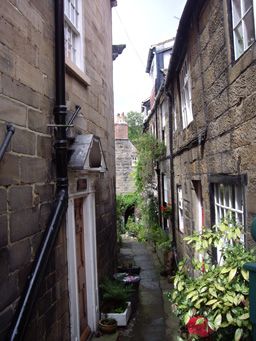
A Narrow Alley in the Lower Bay
The first mention of Robin Hood’s Bay is by King Henry VIIIs’ topographer John Leland, where he recorded that there were 20 cottages, and we know that by 1540 there were 50 cottages. In the latter half of the 18th century, and the early part of the 19th century there was a thriving fishing industry here. Because of its location it was a very prolific smuggling area, with its small twisting roads, lanes, alleys and closely built houses and cellars. In fact, it was known as the busiest smuggling community on the North Yorkshire Coast.
It is said that contraband could be brought ashore and taken to the top village by being passed from one house to another, without touching the ground. Not only were the excise men thwarted by the close-knit community, so too were the press gangs from the Royal Navy.
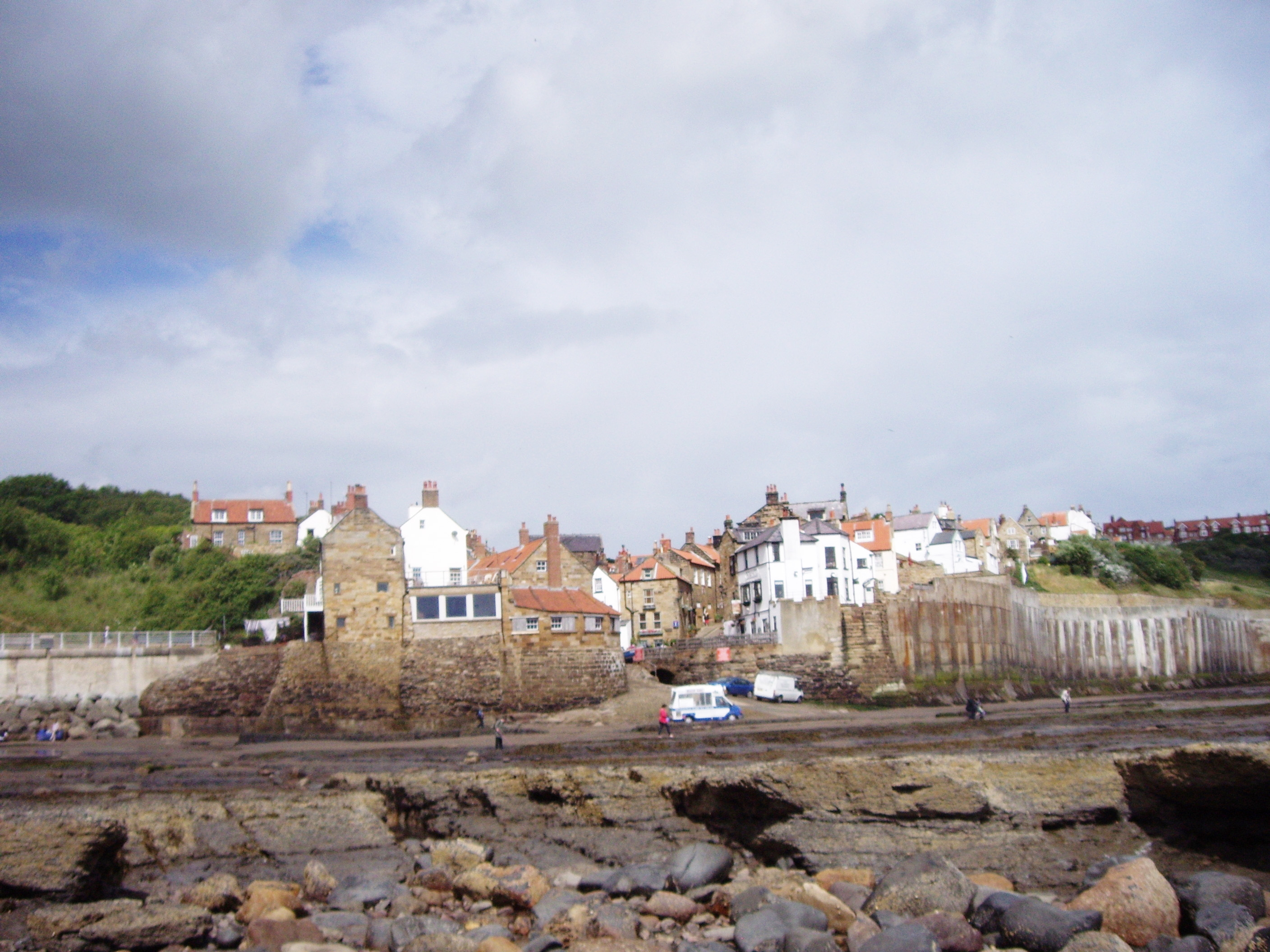
Robin Hood's Bay from the Beach
The womenfolk would beat a drum to alert their men to the appearance of these gangs, and it was told that they used rolling pins and boiling water to deter them. With the advent of the railway, tourism became more and more important and the fishing industry declined. There are now only a handful of fishing boats launched by tractors at the bottom of the village. In January 1881 a large brig from Whitby the ‘Visitor’ was floundering off the coast of Robin Hood’s Bay in a huge storm. Scarborough Lifeboat could not attend and the only way the Lifeboat from Whitby could get there was by overland.
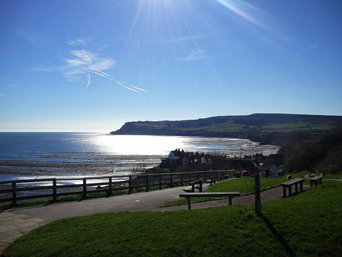
Robin Hood's Bay
It took many men and horses to pull the lifeboat eight miles in snowdrifts over the fields to reach the cliffs, whereby the lifeboat had to be manually lowered into the sea. The shipwrecked crew were rescued on the second attempt and brought ashore to a cheering crowd. In 1881 the RNLI based a lifeboat here but in 1931 is was decided that the lifeboat from Whitby would cover this area and it was withdrawn.
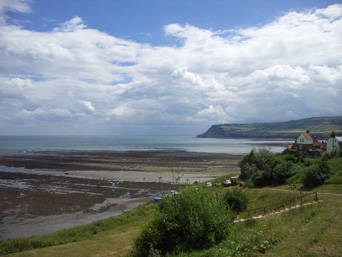
Robin Hood's Bay at lower tide
The strength of the North Sea and the fierce winds that can batter the land, have taken their toll on Robin Hood's Bay. Many houses have been lost to the sea over the centuries. In 1780 a large
part of the original main road, King Street, slipped away. The last cottage to fall victim was in 1950. A new sea wall defence was constructed in 1975 to try to halt this erosion, and again in 2001 further
protection work was carried out.
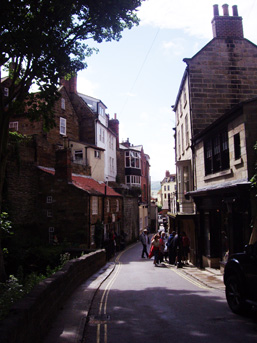
A Pleasant Walk through the Lower Bay
With the advent of the railway, tourism grew in this very picturesque village. By 1914, Mount Pleasant Estate was established, with many large houses and bed and breakfast establishments in the upper part of Robin Hood's Bay. The Majority of the houses in the lower bay were built between 1650 and 1750. The old St. Stephens’ church was built in 1822 on the site of an older church. It has many memorials to shipwreck victims, but also details of the lifeboat’s heroic rescues. There is a rare surviving ‘maidens garland’ (a posy of flowers placed on the coffin of an unmarried woman). Another current St. Stephens C of E church was built on Thorpe Lane in 1870.
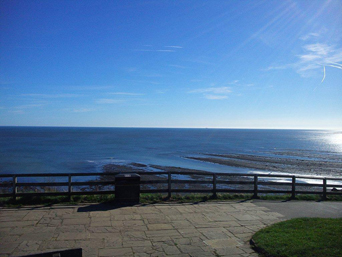
Sea at Robin Hood's Bay
There is a Methodist Chapel on Wesley Lane. The old Weslyan Methodist Chapel dating from 1725 ceased holding services in 1937 and this building now houses a café, gift shop and small cinema. The Catholic Church of St. Bedes’ is in Thorpe Lane. In 1891 Reverend RJ Cooper bought a small cottage near to the slipway and converted it into a Coroner's Office and mortuary. All this closed in 1987. Today, this building is The Robin Hood’s Bay Museum, which is open from June to September and admission is free.
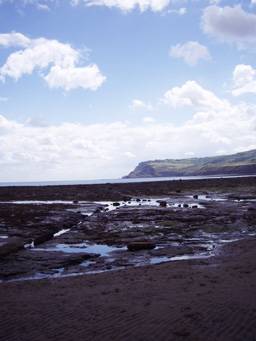
The Rocky Shore at Robin Hood's Bay
As one would expect there are a number of self-catering and bed and breakfast establishments in Robin Hood's Bay. Many of Robin Hood's Bay's cottages in the lower bay, are now self-catering cottages.
There are also quite a number of restaurants and tearooms,
a post office, butchers, general stores, antique shops, bookshops, clothing and walking boot shop and gift shops. The public houses are The Laurel, Ye Dolphin, The Bay Hotel, The Victoria Hotel and The Grosvenor Hotel.
There are also caravan and camping sites.
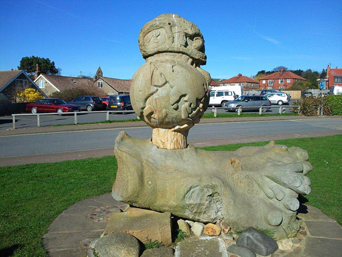
Millenium Statue at Robin Hood's Bay
The public conveniences are at the lower end of the village close to the slipway. Pay parking is on the bank top of the upper part of the Robin Hood's Bay. Only residents cars are allowed to go down to the lower part of the village. There is a larger car park near the Mount Pleasant Area. At the Bank top is a most unusual stone structure, the Millenium Statue.
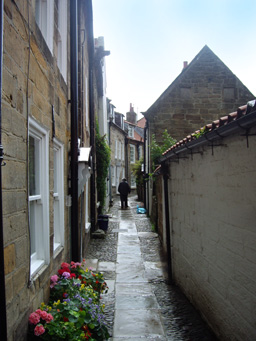
A Narrow Alley Footpath in the Lower Bay
Robin Hood’s Bay is at the eastern terminus of Wainwright’s Coast to Coast Walk. It is part of the Cleveland Way National Trail and is featured in a number of different walks by various
publications and the tourist board. The disused railway line to Whitby, is a pleasant walk on the old cinder path and doubles as a cycle trail. Cycles can be hired from Trailways, near Hawsker.
The North East Yorkshire Geology Trust arranges walks and beach activities for children. There is a also a Riding Centre, Tennis Courts, Bowling and putting greens.
Various events are held throughout the year including the folk festival and Victorian weekend.
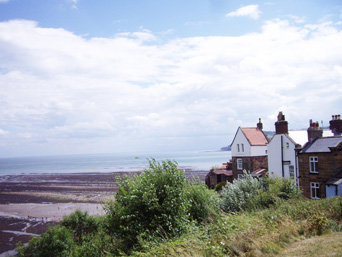
The Clifftop at Robin Hood's Bay
Robin Hood's Bay has had its own monthly news magazine, 'The Bayfair', since 1975. You can visit the Bayfair Website at www.bayfair.co.uk for more information about the magazine and the locality.
Leo Walmsley, the famous author, born 1892 lived here from 1894 to 1913. Members of the Leo Walmsley group, formed in 1985 meet annually here. He was most famous for his ‘Bramblewick’ books written in the 1930s
which portrayed the fishing community and Robin Hood’s Bay.
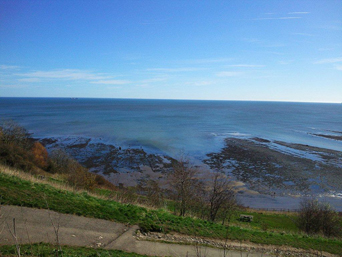
The Rocky Shore North of Robin Hood's Bay
The beach, with its wave cut platforms has amazing rock pools with many of small marine creatures to delight both young and old alike. A sandy beach lies further along from the slipway, and the rocks hide a multitude of fossils. Depending upon the tides, it is possible to walk to Boggle Hole, a notorious smugglers haunt. The name probably derived from ‘boggle’ a bogeyman, as a deterrent to keep strangers away from viewing the contraband trade. On the site of an old watermill powererd by Mill Beck stands the Boggle Hole Youth Hostel. It can also be reached by a narrow road leading off the A171.
